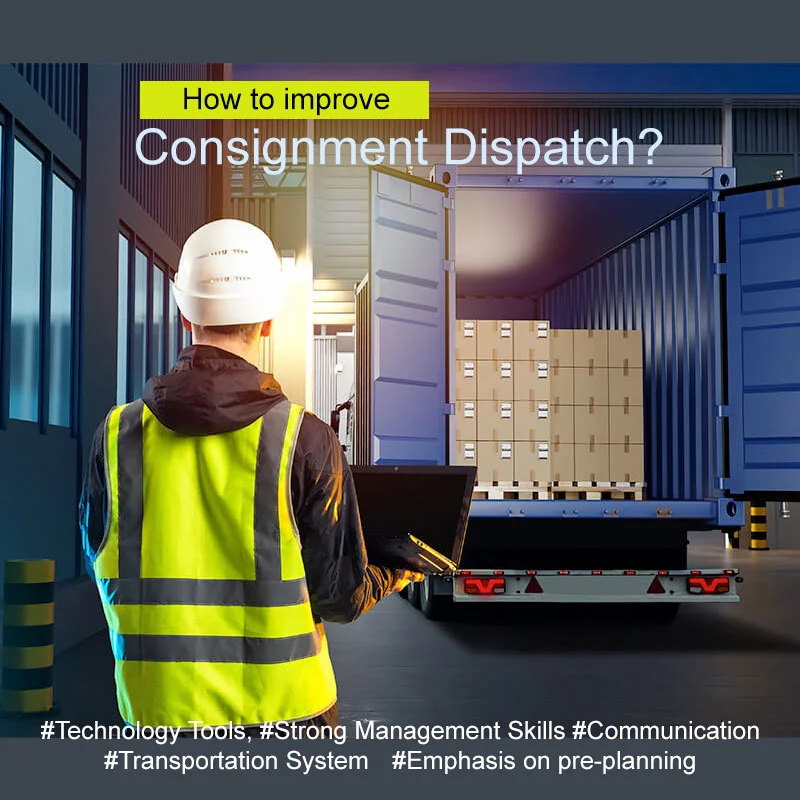Consignment dispatch simply means goods delivering to the customer, dealer, or distributor at the right time, in the right quantity, and the right manner. However, this process is often plagued by delays, errors, wrong deliveries, or payment follow-up issues.
If you are facing these issues or want to further improve consignment dispatch, then this article is for logistics and transport industry.
Here we will learn in detail how to make the consignment dispatch process organized, accurate, and fast.
(a) Improve Inventory Management
Use FIFO (First In First Out) so that older products go out first. This reduces the chances of expiry or damage. LIFO (Last In First Out) can also be useful in some cases like newer varieties need to be sent first. Use inventory software ERP. This allows you to see in real-time what is available and what is out of stock.
(b) Emphasis on pre-planning:
Every customer has different needs. Some want timely delivery, some exact quantity, and some pay attention to packaging quality. Identify these needs and plan the dispatch. Create a dispatch calendar that shows which consignment to send on which day, to which customer, and by which vehicle. If there are multiple deliveries in the same area, plan routes to save time and diesel. Use tools like Google Maps.
(c) Professionalize the Transportation System:
Choose a vehicle with a GPS facility to know where the goods have reached. This keeps both you and the customer at peace. Engage with licensed and insured transport companies rather than local truck owners. Pack goods in safe, sorted, and durable packaging. Train staff on how to avoid product damage during loading.
(d) Transparent Documentation:
Documents must be made mandatory for every dispatch like Delivery Challan, GST Invoice, E-Way Bill (if required), and Packing list. Keep physical and digital copies of these documents. Save the digital copy in Google Drive or any ERP system. Scanning of goods makes tracking easier and reduces errors.
(e) Strengthen Customer Communication:
Inform customer via SMS or Email immediately after dispatch, vehicle number, ETA (Estimated Time of Arrival), and tracking link (if possible).
Get a signed delivery receipt from the customer.
Digital POD helps avoid future complaints.
(f) Process After POD:
As soon as the goods are delivered, deduct them from inventory. This will help you plan for the next time. If the goods are sent on credit, create a system that gives gentle reminders to the customer. Use polite WhatsApp messages, SMS, and calls. Send a short Google Form so customers can provide their feedback. This will give you new opportunities for improvement.
(g) Technology:
For small businesses keep records in Excel or Google Sheets. For medium to large companies: Software like transport management software, Tally, Marg ERP, and Busy are very useful.
(h) Professional Training:
Every staff member should know what the dispatch process is, what the priorities are, and what rules to follow. Fix discipline and responsibility. If a mistake occurs, it should be investigated and responsibility fixed.
(i) Analyze Performance Regularly:
At the end of every month or week, check: How many dispatches were made?
- How many were delivered on time?
- Which customers complained?
- Which payments are pending?
Create a simple MIS report and work on the improvement points in it.
Conclusion
Improving consignment dispatch requires a well-thought-out strategy, the support of technological tools, and strong management skills. Every business has delays or errors at some point, but if you follow the above-mentioned measures, you can reduce these errors to a great extent. Timely, secure, and transparent delivery not only satisfies customers but also enhances your brand’s credibility and reputation.

Digital Marketing Executive

